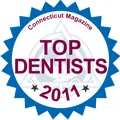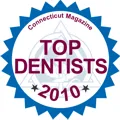Please click on a link to find out more!



Your initial appointment will consist of a consultation explaining your diagnosis and treatment options. This initial oral examination includes a visual examination, charting, periodontal probing, diagnosis and treatment recommendations. We will also take x-rays, which might include the following: the panoramic x-ray, full mouth series for proper diagnosis of the entire mouth, or bite-wing x-rays for diagnosis of decay in between the teeth.



In some instances dental composite can be an appropriate restorative for fillings placed in back teeth. Patients often like this option because the white color of composite fillings is much less noticeable than the silver coloration of denDental bonding can be used to create cosmetic enhancements for teeth. It can be used to close a gap between two teeth, repair damage to a front tooth, or create a natural appearing filling for a back tooth. read more



Dental crowns ("caps") are one of dentistry's most versatile types of restorations. Beyond just offering a way to rebuild and strengthen a compromised tooth, they also provide a way by which a tooth's overall appearance (color, shape and even apparent alignment) can be drastically changed. read more



A denture is a removable replacement for missing teeth and adjacent tissues. It is made of acrylic resin, sometimes in combination with various metals.
Types of dentures
Complete dentures replace all the teeth, while a partial denture fills in the spaces created by missing teeth and prevents other teeth from changing position read more



Repairing a front tooth has always required the dentist to place a cosmetic (tooth colored) filling, whether the damage occurred from decay or a chip. Now, when you get decay in a back tooth, there are choices as to which material can be placed to restore the tooth. In the past, a silver filling (known as amalgam) was the material of choice in this area. There weren't good options for placing cosmetic (tooth colored) fillings in areas were heavy use was anticipated. The amalgam was simply stronger. Now, because of improvements in the materials, you can choose a more esthetic alternative if our dentists deem you are a candidate. read more



Dental implants are designed to provide a foundation for replacement teeth that look, feel, and function like natural teeth. The person who has lost teeth regains the ability to eat virtually anything and can smile with confidence, knowing that their teeth appear natural and that their facial contours will be preserved. The implants themselves are tiny titanium posts that are placed into the jawbone where teeth are missing. The bone bonds with the titanium, creating a strong foundation for artificial teeth. In addition, implants can help preserve facial structure, preventing the bone deterioration that occurs when teeth are missing. read more



Veneers are thin pieces of porcelain or plastic cemented over the front of your teeth to change their color or shape. Veneers are used on teeth with uneven surfaces or are chipped, discolored, oddly shaped, unevenly spaced or crooked. read more



Whitening procedures can effectively restored the smile of people with stained, dull, or discolored teeth. Our advanced whitening techniques can give you a beautiful, healthy and natural looking whiter smile with:
- Low to no sensitivity
- Comfortable, easy process
- No need to give up coffee, tea, or red wine
- Permanent results – white teeth for your lifetime!
Our procedures are entirely safe for teeth and gums and perfect for ages 14 to 90. read more



The term "dental sealant" or "tooth sealant" refers to a plastic resin that we bond into the grooves of the chewing surface of a tooth as a means of helping to prevent the formation of tooth decay ("cavities"). Dental sealants can play an important role in helping to prevent tooth decay ("cavities") insome locations on teeth. read more



Root canal therapy is a remarkable treatment with a very high rate of success, and involves removing diseased tissue in the interior or pulp of the tooth, halting the spread of infection and restoring the healthy portion of the tooth. In fact, root canal therapy is designed to save a problem tooth; before the procedure was developed and gained acceptance, the only alternative for treating a diseased tooth was extraction. read more



The more you know about how dentists pull teeth, the more uneventful your extraction process will likely be. As disconcerting as the idea of having a tooth pulled may be for some, there are times when it's a simple fact of life that sometimes, a tooth must be extracted. Our doctors will do everything possible to make your experience as pain free as possible. read more



Periodontal disease, (or gum disease) is caused by bacteria, plaque, and tarter below the gum line that irritates the complex that attaches the gum tissue to the bone. 3 out of 4 Americans have some form of periodontal disease and only 3 out of 100 will seek treatment before it’s too late. Gum disease is a silent, chronic, painless, and communicable bacterial infection that often goes undetected or ignored until severe gum and bone destruction is present. If left untreated, gum disease will lead to tooth loss.
Treatment of periodontal disease is accomplished by numbing the area of the mouth that is affected and cleaning below the gumline, thus removing the irritants so the gum can reattach to the tooth. read more



Dental radiographs are invaluable aids in diagnosing, treating, and maintaining dental health. Exposure time for dental radiographs is extremely minimal. Our doctors utilize digital imaging technologies within the office. With digital imaging, exposure time is about 50 percent less when compared to traditional radiographs. Digital imaging can also help us retrieve valuable diagnostic information. Digital x-rays are often more precise diagnostic tools because we view the image on a 17 inch computer monitor instead of holding a 1 inch paper film up to the light. Digital x-rays result in approximately 1/6 the radiation exposure to you.



Our doctors utilize intraoral camera technology that helps enhance your understanding of your diagnosis. An intraoral camera is a very small camera. In some cases, an intraoral camera is just a few inches long. An intraoral camera allows our practice to view clear, precise images of your mouth, teeth, and gums, to aid us in making an accurate diagnosis. With clear, defined, enlarged images, you see details that may be missed by standard mirror examinations. This can mean faster diagnosis with less chair-time for you!



For some individuals whos teeth that have small chips, uneven edges, or teeth that are too long or sharp to be esthetically pleasing, dental countouring or reshaping using sandpaper discs can achieve a cosmetic makeover by simply making small alterations to the edges and vastly modifying the overall apperance of the teeth, without more drastic dental procedures.



Temporomandibular disorder or TMD is a broad term referring to problems with the jaws and their functioning. It is commonly referred to as "TMJ".This system is very complex and problems are caused by a variety of factors. read more
















